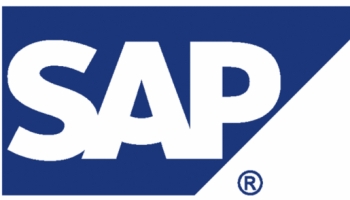The decision by SAP to pay a staggering $5.8 billion (£3.95 billion) to acquire Sybase shows that the German enterprise software provider is very serious about in-memory database technologies.
SAP Buys Into Analyst Vision
The Sybase acquisition continues SAP’s push for in-memory database solutions, the use of which Forrester Research predicts will grow in the next four years to the point where roughly a third of enterprises will be using in-memory databases to support mission-critical applications.
 “SAP has the in-memory [and] caching at the application [and] middleware tier, while Sybase recently made available their database in-memory solution,” Forrester Research analyst Noel Yuhanna said. “In-memory matters…because often there is latency involved in data access, especially tied to disk I/O that causes slower response times. … Having the data in cache [or] in memory can dramatically improve performance by 10 times, even 50 times, so we definitely see more enterprises looking for such a solution.”
“SAP has the in-memory [and] caching at the application [and] middleware tier, while Sybase recently made available their database in-memory solution,” Forrester Research analyst Noel Yuhanna said. “In-memory matters…because often there is latency involved in data access, especially tied to disk I/O that causes slower response times. … Having the data in cache [or] in memory can dramatically improve performance by 10 times, even 50 times, so we definitely see more enterprises looking for such a solution.”
SAP co-founder Hasso Plattner discussed the company’s interest in in-memory technology here in a video interview with himself. SAP has already delivered columnar in-memory database technology to market via its Business Warehouse Accelerator hardware-based acceleration engine, while Sybase has also delivered in-memory database technology for its ASE (Adaptive Server Enterprise) database with the release of Version 15.5 earlier this year, noted Matt Aslett, an analyst with The 451 Group.
With Sybase on board, SAP “effectively delivered” on Plattner’s vision of in-memory databases for analytical and transaction processing – albeit with two different products, Aslett said.
“At this stage it appears that SAP’s in-memory functionality will quickly be applied to the IQ analytic database while ASE will retain its own in-memory database features,” he explained. “Over time, we expect R&D to focus on delivering column-based in-memory database technology for both operational and analytic workloads.”
Pressure On Rivals
If the companies strike the right notes with integration, the deal with Sybase has the potential to put pressure on the industry’s major database vendors, Yuhanna said. But that doesn’t mean SAP will be able to turn the database market completely on its side in terms of market share.
“The Sybase acquisition definitely puts some pressure on Oracle and Microsoft SQL Server, but the impact will not be seen at least for the next two to three years, since there is work to be done by SAP to integrate with Sybase,” Yuhanna said. “We believe that it will take SAP anywhere between six [and] eight months to do the Sybase-SAP ERP application integration. While we do envision that SAP will offer a tighter and more optimized integration with Sybase database in the years to come, we don’t see Sybase [becoming] a major threat to Oracle or SQL Server in the area of non-SAP applications any time soon.”




